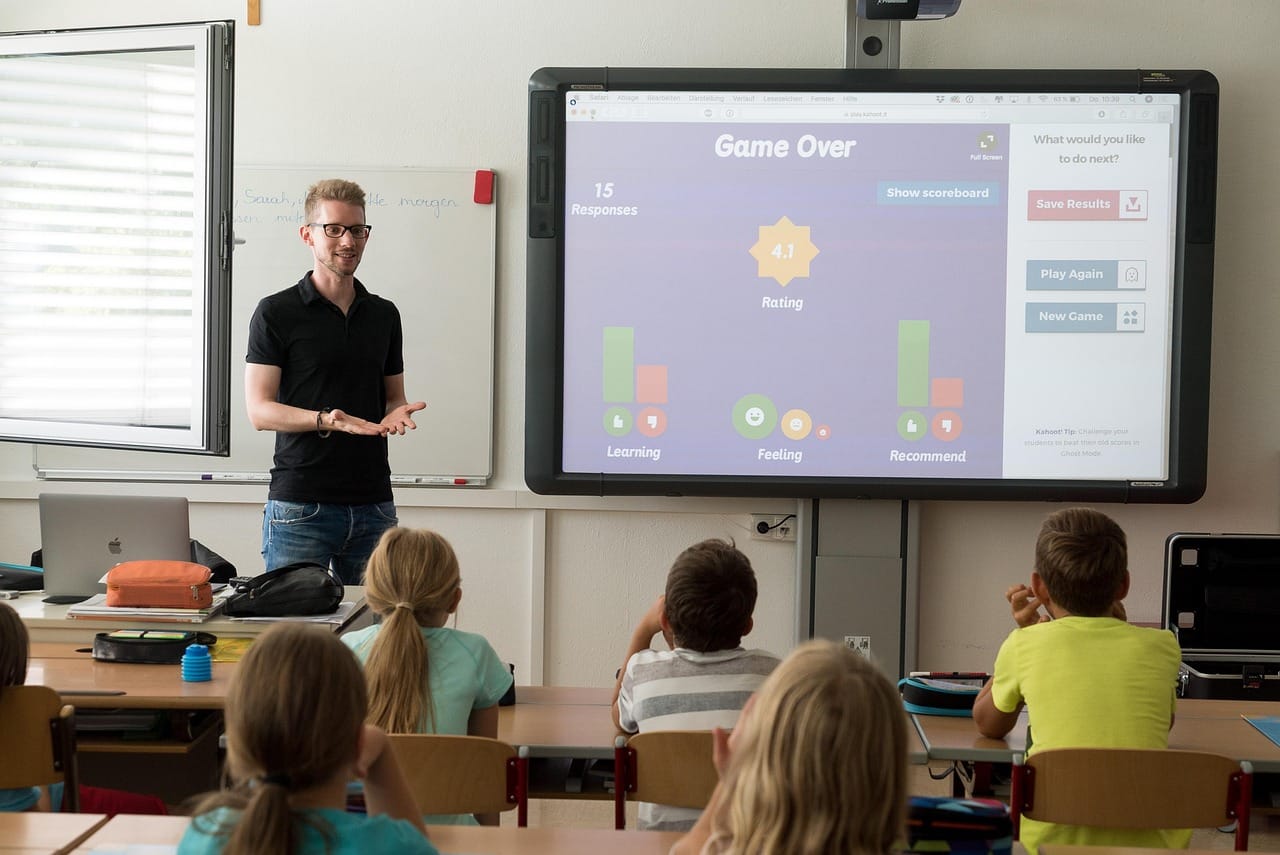How teachers can foster independent thinking in tech-savvy classrooms

The classroom has never been more exciting or more challenging. Today’s students are growing up surrounded by technology that puts endless information at their fingertips. They can find answers in seconds, write essays with digital assistance, and even use AI to generate ideas.
For teachers, this new environment demands a different kind of skill: not just teaching students how to learn, but how to think.
Independent thinking has always been the soul of real education. It’s what helps students go beyond memorizing facts and start analyzing, questioning, and forming their own conclusions.
But in tech-savvy classrooms where tools often “think” for them, teachers must guide students to use technology as a support system, not a substitute for thought. The question is how teachers can help students use it responsibly and creatively, without losing their critical edge.
Encouraging Inquiry Over Instant Answers
Students today have grown used to finding quick solutions. When a problem arises, the instinct is to ask Google or chat with an AI assistant. While this can be efficient, it can also discourage the deeper thinking that comes from wrestling with uncertainty.
Teachers can counter this by encouraging inquiry, the habit of asking better questions rather than rushing to find answers. Instead of handing students information, teachers can pose open-ended challenges.
For example, rather than saying “Research how renewable energy works,” they might ask, “If your city had to run entirely on renewable energy, which source would you choose and why?” The task now shifts from finding data to interpreting and evaluating it. Students must weigh pros and cons, consider local context, and justify their decisions.
Technology can still be part of this process, but as a tool for exploration rather than an answer key. The goal is to make students comfortable with curiosity, to teach them that understanding something deeply often takes time, reflection, and sometimes a few failed attempts.
Balancing AI Assistance With Human Judgment
AI-driven tools can be both a blessing and a temptation. They offer valuable support for brainstorming, drafting, and organizing ideas, but they can also become shortcuts that prevent students from thinking critically. This is where teachers play a crucial role in setting boundaries and expectations.
For instance, if a student turns in an essay that seems too sophisticated for their level, a teacher might use an AI content detector to check if parts were generated artificially. But the real lesson isn’t about catching the student, it’s about teaching integrity and self-awareness.
A constructive conversation could go something like this: “I noticed some parts of your essay might have been written with AI help. Let’s talk about how you can use these tools to support your thinking rather than replace it.” This approach transforms what could be a disciplinary issue into a teachable moment.
When students understand that AI is meant to assist creativity, not automate it, they begin to view their own thinking as valuable.
Teachers who emphasize the why behind each learning process, not just the final product, cultivate an environment where technology serves human thought, not the other way around.
Redefining The Role Of The Teacher
In a tech-savvy classroom, the teacher’s role has evolved from being the “giver” of knowledge to being a guide who helps students interpret and apply it.
Independent thinking thrives when students feel empowered to explore, make connections, and form their own opinions, but that doesn’t happen without structure.
Teachers can model independent thinking by demonstrating how to evaluate sources, question biases, and cross-check facts.
Let’s say a student cites a viral claim from social media; the teacher can then guide the class through verifying it together. This teaches discernment, a skill that will serve students far beyond the classroom.
The shift is subtle but profound: instead of teaching what to think, educators teach how to think. They become facilitators of curiosity, showing that good questions often matter more than neat answers.
Creating Projects That Require Original Thought
One of the best ways to nurture independence is through project-based learning. Assignments that require creativity, personal reflection, and problem-solving naturally discourage mindless copying.
A history teacher might ask students to design a museum exhibit on a historical event, deciding which artifacts, visuals, and narratives best tell the story.
A science teacher might have students create a sustainability plan for their school. These tasks can’t be completed by simply searching online. They demand synthesis, decision-making, and creativity.
Technology can enhance these projects when used thoughtfully.
Students might use digital design tools, data visualization software, or coding platforms, but the critical thinking still comes from how they apply those tools. The process itself, brainstorming, planning, and iterating, becomes the real education.
When projects are authentic and personally meaningful, students learn that their voice matters. They stop asking, “What should I write?” and start asking, “What do I want to say?”
Teaching Media Literacy
In a world flooded with information, teaching students how to think independently also means teaching them how to evaluate what they consume. Media literacy is no longer optional; it’s essential.
Students need to learn to question the credibility of online sources, detect bias, and recognize misinformation.
Teachers can incorporate real-world examples to sharpen these skills, analyzing viral news stories, advertisements, or even social media posts to uncover hidden messages or unreliable data.
Encouraging debates and discussions around current issues can further deepen critical awareness. When students must defend a position using credible evidence, they quickly realize that not all information online is equal.
The teacher’s role here is to model skepticism without cynicism, showing that questioning information is not about distrust, but about responsibility.
By integrating media literacy into everyday lessons, teachers help students become active thinkers rather than passive consumers.
Fostering A Culture Of Reflection
Independent thinking grows best in classrooms that value reflection. Students should have space to pause, reconsider, and learn from their own reasoning. But with digital distractions constantly competing for attention, reflection has become a rare skill.
Teachers can reintroduce it through small but powerful habits. They may end each class with a reflective question like “What’s one idea that challenged your thinking today?” or “What do you still wonder about?” This helps students process learning on a deeper level.
Digital journals, blogs, or discussion boards can also serve as spaces for reflection. The act of writing encourages metacognition, thinking about one’s own thinking. When students articulate their thought process, they begin to see patterns, recognize assumptions, and refine their logic.
Reflection transforms learning from something that happens to them into something that happens within them.
Encouraging Collaboration Without Dependency
Collaboration is one of the great strengths of tech-enabled classrooms, but it can easily slide into dependency if not managed carefully. Teachers must strike a balance between teamwork and individual accountability.
Group projects, for instance, should include roles that ensure each student contributes original input. Digital tools like shared documents or project trackers can help make contributions visible.
Teachers can also design reflective components that require each student to explain their thinking or justify their choices individually.
Collaboration should amplify ideas, not dilute them. When done right, it teaches students to listen, negotiate, and refine their own perspectives through dialogue. In this way, they learn that independence means thinking clearly even when surrounded by many voices.
Using Technology To Teach Problem-Solving
Tech-savvy students often know how to use tools, but not always how to apply them creatively to solve problems. Teachers can change this by framing lessons around challenges that require both digital literacy and critical reasoning.
The teacher could pose a question like: “How could technology help reduce food waste in our school?” Students might research data, use spreadsheets to model potential outcomes, or even design an app prototype.
Through this process, they learn to merge analytical and creative thinking, the essence of independent thought. By turning technology into a medium for problem-solving rather than passive consumption, teachers help students become innovators rather than imitators.
Modeling Intellectual Humility
Teachers who foster independent thinkers often lead by example. They show students that it’s okay not to have all the answers. What matters is the willingness to seek them.
When a teacher admits, “I don’t know, let’s find out together,” it sends a powerful message: thinking is a journey, not a performance.
Intellectual humility encourages students to question confidently but respectfully. It reminds them that learning is dynamic and that even experts evolve. In tech-savvy classrooms, where answers appear instantly, humility becomes the anchor that keeps curiosity grounded in authenticity.
Reimagining Assessment For Independent Thought
Traditional assessments often measure memorization rather than thinking. But in digital classrooms, where facts are easily accessible, assessments need to evolve. Teachers can design evaluations that reward originality, analysis, and synthesis.
Open-ended projects, presentations, and portfolios allow students to demonstrate how they apply knowledge rather than just recall it. Rubrics that emphasize creativity, reasoning, and evidence help reinforce that independent thinking is valued.
Some teachers even incorporate peer assessment, where students evaluate one another’s arguments based on clarity and logic. This not only deepens understanding but also encourages students to think critically about thinking itself, which is a true sign of intellectual maturity.
Nurturing Confidence And Voice
Independent thinking cannot thrive without confidence. Students must believe that their thoughts have value, even when they differ from others. Teachers can nurture this by creating classrooms that celebrate diversity of opinion.
When a student shares an unconventional idea, the teacher’s reaction matters immensely. A response like, “That’s an interesting perspective. Can you tell us more?” signals that new ideas are welcome. Over time, students learn that originality is not a risk but a strength.
Technology can amplify these voices, too. Digital forums, student blogs, and creative showcases allow students to share their work with real audiences, making learning feel purposeful. When students see that their thoughts can influence others, they begin to take ownership of their minds.
Final Thoughts
Technology will continue to evolve, but the human mind remains the ultimate engine of innovation. As classrooms grow more digital, teachers must act as custodians of thought, ensuring that students not only learn how to use technology but also how to think beyond it.
Independent thinking is what turns information into insight and tools into transformation. It’s what allows a student to see technology not as a replacement for creativity, but as an extension of it.
In the end, fostering independent thinkers isn’t about rejecting technology; it’s about teaching students to steer it with purpose. When teachers model curiosity, reflection, and integrity, they prepare students for a world that demands both technical skill and human depth.
Because no matter how advanced the tools become, the ability to think independently will always be the most powerful technology of all.

